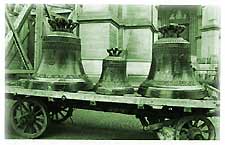The Church und National Socialism
Rudolf Zinnhobler

The totalitarian, National Socialist state regarded the church as an inconvenience, even as an opponent. This resulted in a downright struggle between church and state, which was fought on many levels. The Catholic Church of the provincial capital Linz was particularly affected. The monasteries were closed down, spiritual welfare work, above all for young people, was obstructed in many ways, and church property largely expropriated.
The church was especially damaged by the abolition of catholic organisations. Twenty priests were imprisoned for various lengths of time, of whom two (Father Paulus Wörndl and Dr. Johannes Gruber) were even executed.
But resistance also brought renewal. The introduction of church dues made the church financially independent of the state, the structure for spiritual welfare work was improved in the long-term by the foundation of 18 new spiritual welfare centres, and liturgical life was clearly invigorated. Bishops Johannes Maria Gföllner and Josef Calasanz Fließer contributed significantly to the survival of the Catholic Church. All in all one can claim that the church, while having to accept some defeats and not having proved itself in every respect, nevertheless emerged from the struggle between church and state as the victor.